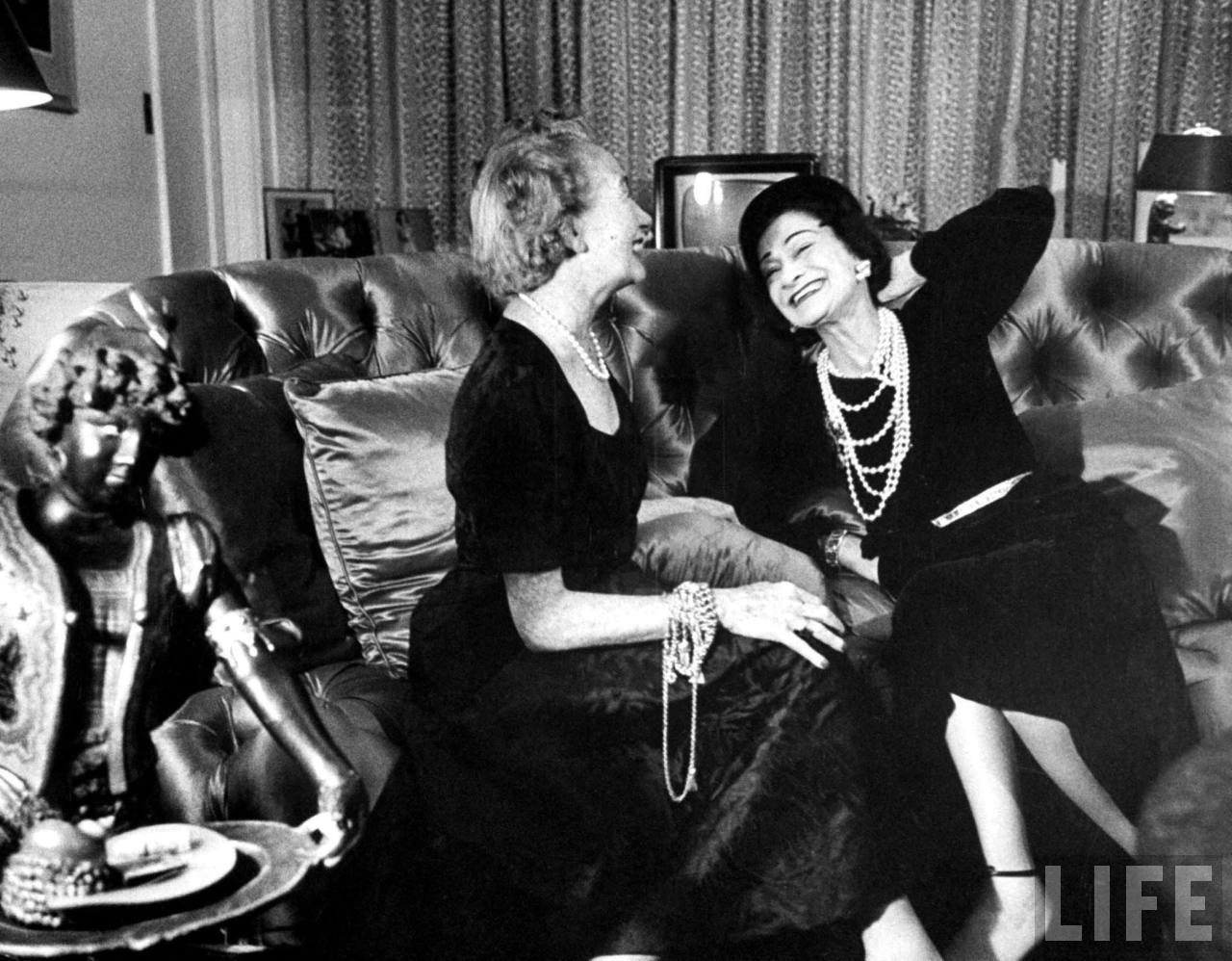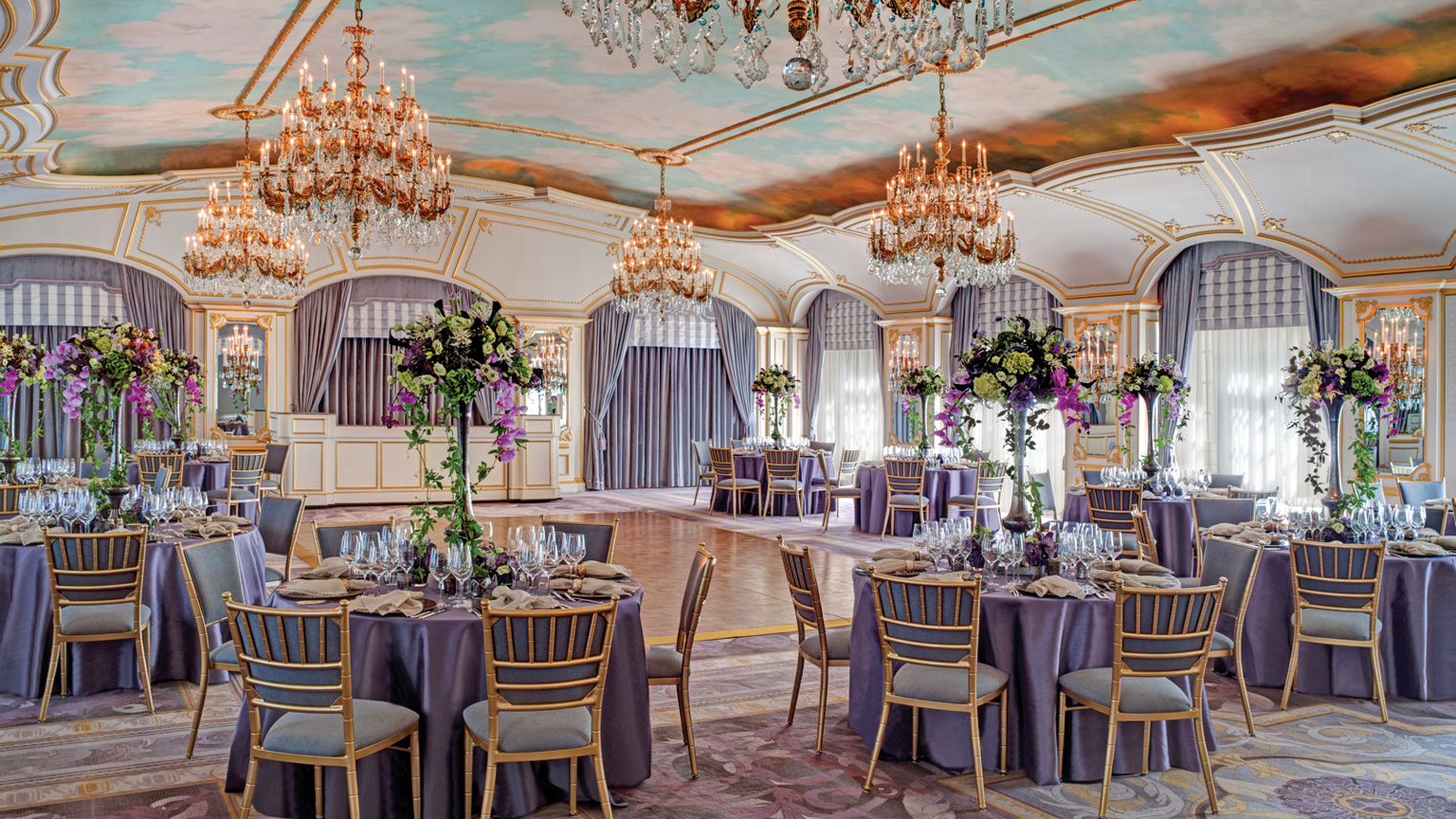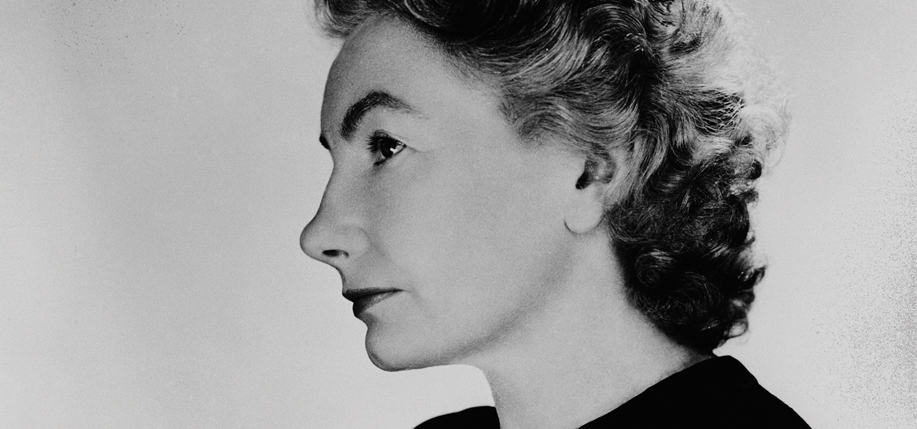One of the most extraordinary fashion editors of all time was an immigrant from Ireland.
The Irish don’t spring to mind when discussing fashionistas, women such as Anna Wintour or her flamboyant forerunner, Diana Vreeland. And it was Vreeland who elevated fashion editors to iconic status but who hired her? Carmel Snow, an immigrant from Ireland and editor of Harper’s Bazaar strode onto the dance floor of the St. Regis in 1936 and offered Diana a job – just because she liked her outfit. Carmel was fashion’s most powerful voice from the 1930s to the 1950s but her reign was before editors were celebrities and she sank into obscurity.
She was born Carmel White in Dalkey in 1887. The family firm was to represent Irish craft in the Chicago World Fair but Carmel’s father died suddenly. Days after his death, Annie, his wife and mother of six, was sailing, solo, across the Atlantic to manage the Irish Village at the fair. Selling lace hankies soon proved too small-time for the ambitious widow, and she opened a dress store in Chicago, where Carmel got her start in fashion.
Then Chicago became too small-town for Annie, so she packed her brood and moved to New York where she opened another upmarket store. Her mother brought Carmel to the Paris shows as her daughter was gifted with “ocular total recall” – once she saw a design, every detail became embedded in her memory, allowing her to copy it back in New York. The fashion spy fell in love with Paris with an amour éternel that never faded.
The Whites, proudly Irish Catholic with brogues intact, were successes in New York, then still the bastion of Park Avenue Protestants. Annie’s business thrived and she acquired a new husband. Her son Tom White became an executive in the Hearst Organization. Another son, Victor, decorated the Roof Ballroom of the St. Regis Hotel. Carmel and her sister went into the magazine world.
With the outbreak of WWI, Carmel joined the Red Cross, ostensibly to tend to doughboys, but really just to be away from her mother and especially to be back in Paris. In 1921, the writer who usually covered the Paris shows fell sick and Carmel stepped, or rather dived, in. Her report so impressed publisher Condé Nast that he hired her as an assistant editor at Vogue. Nast became Carmel’s mentor and taught her the magazine business. She was his pet, which earned her the jealousy of her immediate supervisor, Edna Chase Best, and weirdly, that of her mother. Annie, for some perverse reason, would call Carmel at work, taunting her, predicting her success at Vogue wouldn’t last.
Edna, who demanded all women wear hats in the office, found Carmel too much of a free spirit. Carmel exhibited the behavior that stayed with her throughout her career – a tiny dynamo running at warp speed, always in a restless chase for the new and the next. She apparently didn’t need sleep or food and never stopped working, even having her secretary follow her into the rest room to take dictation. Through it all, she remained divinely chic.

Her frenetic spirit paid off – she brought a new, bold look to Vogue, even putting the work of surrealist Man Ray on the cover. She worked closely with legendary photographer Edward Steichen, who brought his pictorial realism to the magazine, and the two revolutionized fashion photography. It was all too much for Edna. She reneged her promise to retire, and wouldn’t allow Carmel to be editor-in-chief. Carmel, in turn, was chafing under Edna’s dominance; it reminded her of working under her likewise territorial and envious mother.
In 1926, Miss White became Mrs. Snow or, oddly, Carmel White Snow, when she married George Palen Snow, a country squire, horseman, and mulcher. Stuttering and bumbling aside, “Snowie” was a catch for this Irish immigrant; his pedigree put Carmel in the Social Register. Snowie had no problem with Carmel continuing her career, since it allowed him to continue his career of not working. Married at 39, Carmel wasted no time in having three children, all girls, in rapid succession. Motherhood was barely a blip on her career screen. She was back to work straight out of the hospital, leaving her babies with a nanny and, presumably, Snowie.
Theatre critic Kenneth Tynan once described Carmel as “half-Incan and half-Irish” and in 1936, her mythic Incan side took over. Nast, aware that Carmel’s brother Tom was at Hearst, Condé Nast’s fierce rival, asked Carmel to promise that she would never leave Vogue for Hearst’s Harper’s Bazaar. She promised. Soon afterward, while still in the hospital after giving birth, Carmel accepted the Hearst offer. Nast took her defection personally, writing “Your treacherous act will cling to you and your conscience.” Carmel, her mother’s daughter, never looked back.
Nast surely entertained some schadenfreude in discovering that Carmel went on to make Hearst’s life miserable, forcing him to howl in a memo, “Does anyone have any control over Mrs. Snow? I KNOW I don’t.” On the down low, Carmel learned that King Edward VIII planned to abdicate, so she immediately commissioned a photograph of Wallis Simpson in a chic Chinese jacket. Mrs. Simpson’s picture sailed off to New York, only to be snatched by Hearst who wanted the picture of the of world’s most famous woman to run, first, in his newspapers. Carmel stormed into Hearst’s office “like a little Irish firecracker” and nabbed the picture, which premiered… in her magazine.
When Carmel joined Harper’s Bazaar, it was a fusty, financially failing rag with none of the cachet of Vogue. As Harper’s editor-in-chief, she was finally able to re-fashion fashion magazines. Harper’s Bazaar became a reflection of Carmel and her oft-repeated vision of creating a magazine for “a well-dressed woman with a well-dressed mind.” She presumed that her audience was like her, intelligent, independent and not chained to domesticity. Under Carmel Snow, art, literature, and journalism converged in the most unlikely of places – a fashion magazine, and Harper’s Bazaar became the most popular publication of its day.
In 1933, she created a new way to feature clothing by moving the fashion shoot outdoors and putting the models, no longer just mannequins, in motion. She and her art director, the great Alexey Brodovitch, re-invented magazine design with interaction between text and pictures, white space and images that seemed to jump at the reader. She introduced photographers Louise Dahl-Wolfe and Richard Avedon, who later claimed, “Carmel Snow taught me everything I know.”
During World War II, she and photographer Henri Cartier-Bresson snuck into occupied France to get images of the destruction there since, as Carmel said, “people at home really have no idea of what war is.” She ran the photographs in two issues, educating readers on war, but integrated Cartier-Bresson’s photos with the regular content. It was effective. Carmel made fashion seem not trivial, but beauty surviving in a world of suffering.

Just as she wasn’t afraid of surrealism, she wasn’t afraid of realism. Ahead of her time on civil rights, she hired photojournalist Walker Evans to shoot picture-essays on African Americans – domestic servants, housing projects and poverty. She famously, and against Hearst’s orders (“I won’t have that nigger in my living room!”), ran a picture of Marion Anderson, the great contralto.
Colleagues adored her, finding Carmel a warm and witty but very bossy chief executive. Once photographer George Hoyningen-Huene showed her a “private” portrait of Greta Garbo, one he promised would never be published. “I don’t care,” she announced to her staff, “if George rots in jail. I’m running this picture.”
More than anything else, Carmel’s Irish love of literature prompted her to give greatest weight to the writers. The “the well-dressed mind” could read, in Harper’s pages, Virginia Woolf, Truman Capote, Janet Flanner, Carson McCullers, Katherine Anne Porter, Marcel Proust, and members of the Algonquin Round Table. Harper’s Bazaar was now the one with cachet; it was “racy” and intimate, while Vogue was considered dowdy and suburban. Carmel had won.
Her most famous hire for Bazaar was a woman as outrageous as she was gifted. When Carmel Snow hired Diana Vreeland, Mrs. Vreeland faux-protested, “But, Mrs. Snow, I’ve never worked before,” to which Carmel replied, “Well, why don’t you try it?” She did and soon was keeping up with Carmel’s 24/7 work days, rail-thin body, and aversion to food. Carmel, formerly the wild child under straight-laced Edna, was now the blue-haired matron charged with bringing the outrageous Diana down to earth. It was Carmel/Edna Redux as the much younger protégé stole all the vroom in the room. Later, Diana echoed her mentor, but in reverse, and left Harper’s for Vogue.
Throughout her regime, Carmel’s opinion was absolute and as the high priestess of fashion, she gave the first live broadcasts from the Paris shows. Her instincts were said to be infallible – she would doze off at collections only to awaken when the right dress passed by. In 1947, at Dior’s famous fashion show introducing his radical line, Carmel sat, freezing, in her usual front row seat. The show over, the stunned audience remained mute until Carmel stood up and loudly baptized the collection, “Your dresses have such a new look!”
World War II had left fashion, France’s second largest industry, moribund. Carmel worked hard to bring it back to life, championing its designers in the U.S., particularly Dior and Chanel. Her advocacy of the New Look made it the template for post-war design. Paris was back on top of the fashion world, to stay forever.
Carmel similarly “made” the restaurant, Le Pavilion, by glamorizing it with her presence and those of her world-famous lunch guests. Waiters knew she would eschew food (unless jellied consommé counts as food) for a three-martini lunch, the first drink gulped down while the following two were sipped slowly with her characteristic elegance.
She also “made” Cristóbal Balenciaga, dressing in his suits exclusively. By the end of his first show, she was championing him, loudly, and turned over Harper’s Paris issue to his collection. And, she was totally smitten with him, believing he returned her love. “Ours is an intuitive relationship that simply ignores the language barrier.” He may have supported her delusion when he designed a suit especially for her, one that accommodated her lack of a neck. Unknown to Carmel, everyone found the relationship comic, since Balenciaga, though closeted, was gay and in love with his milliner.
The third act of Carmel’s life was a tragic free fall. Cecil Beaton, whose work she introduced, repaid her patronage by announcing (accurately) she had begun to look like a fox terrier. After turning 70 in 1957, she was forced out at Harper’s, replaced by her niece Nancy, considered a dud by all including her aunt. Carmel despaired. She assumed she would be at Harper’s forever since it was, after all, her life. Her marriage was in name only, and her daughters openly resented their absentee mother. It was only when she was seated behind the cash register in the “Siberia” of Le Pavilion that she realized how far she had fallen from her perch. Truman Capote felt the restaurant’s treatment of Carmel threw “the meanness of New York” into relief. He was right.
Carmel decided to go back to Ireland. She bought a mansion in County Mayo and began writing her memoirs embracing Ireland. But, as her biographer Penelope Rowlands explained, “She loved the Irish countryside, but I think she was lonely. She thought there would be a flood of people arriving through on the way to the Paris collections, but nobody ever came.”
Hearing that Snowie was dying, she returned to New York in 1961, but it was Carmel who, at age 73, soon died in her sleep. She was laid out wearing a red brocade Balenciaga suit and would have been delighted by her absolutely fabulous New York funeral, a return to her former glory. She would have loved, too, Parisians celebrating her with a tearful funeral mass honoring the love and loyalty she gave them during their darkest hour. But Carmel would have been indifferent to Snowie’s miraculous recovery and instant re-marriage to a beefy, horsy woman seldom out of hunting clothes. He was always a lousy dresser.
It made sense that Carmel Snow refused to wear seat belts on planes, since she spent her life refusing limitations, never doing what was expected of a woman. She had a big career when few women even worked. An Irish immigrant, she triumphed in the WASPy world of fashion when the signs, “No Irish Need Apply,” were still around. Decades after her death, her groundbreaking influence is everywhere in the photography, writing and design of fashion magazines.
Today she remains anonymous. But, leave it to the French – in 1949, the Irish girl from Dalkey received the Légion d’Honneur from the French government for “…her long friendship for France, and her influence in re-establishing French design in the United States.” That tribute was all the legacy she ever wanted. ♦


Does anyone know of her ties to George Davis? Is he mentioned in any letters, diary, memoir, or other papers she produced over the years?